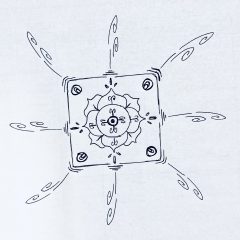Cranial osteopathy is a specialized branch of osteopathic medicine where providers use their hands to palpate and treat disorders of the central nervous system, surrounding connective tissue, and fluid. This concept was initially proposed by William G. Sutherland, DO who studied under Andrew Taylor still, MD the original founder of osteopathic medicine.

In addition to being useful for a range of conditions including colic, poor infant feeding, irritable bowel syndrome, chronic migraines, and traumatic brain injuries; these methodologies likely have a positive effect on chronic conditions associated with brain inflammation including postinfectious brain fog, chronic fatigue syndrome, and depression (see my previous articles on Brain Inflammation and ME/CFS and Long COVID). The body worker can assess dysfunction in these patients through palpating not only deformities in the cranial bones, but in the primary respiratory mechanism of cerebrospinal fluid flow, and deformities in the surrounding connective tissue where the immune cells of the brain reside (e.g., the neuroglymphatic cells).
An Osteopathic provider trained in the gentle techniques of Cranial Osteopathic Medicine may help these patients for their specialized approach. Just as many patients with psychological and somatic trauma are often being underserved by the standard medical model, I believe patients with these chronic pain and fatigue syndromes are similarly underserved. Both cranial osteopathic medicine and likely the new frontier of psychedelic integration can better serve these patients going forward.
